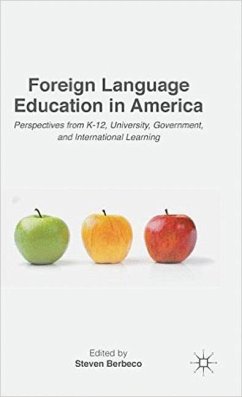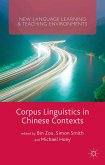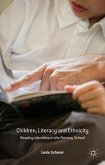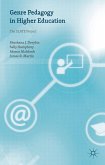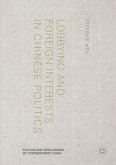Foreign Language Education in America represents a range of perspectives, including elementary, middle schools, high schools, university courses, summer programs, federal government, and international learning. It will appeal to scholars, administrators, and practitioners who are looking for an edited resource that describes effective practices.
Review 1 - Thomas Garza, The University of Texas at Austin
General
1) The proposed project is an edited volume of essays describing 'best practices' in foreign langue education in the U.S., covering K-12, post-secondary, and specialized adult learning scenarios. The goal of the project is to provide a compendium of the best instructional practices offered in a wide spectrum of settings and levels to offer practitioners a useful resource for classroom practices.
2) This project best fits the category of Edited Collection, as it represents the contributions of numerous authors form diverse educational institutions and settings in a single volume.
Proposal
3) The proposal is correct that a single-volume reference work that addresses multiple levels of FL instruction in the US does not currently exist; unfortunately, it does not provide provisional titles or précis of the individual articles proposed in the edition, so it is very difficult to determine the impact or utility of the volume as a whole. It is very possible that individual articles will address topics such as hybrid instruction, flipped classrooms, or other current and highly relevant issues in FL pedagogy, but it is impossible to tell from the proposal provided.
4) Here, too, it is impossible to tell whether the individual articles - as a collection - will advance or even address current scholarship in emerging technologies, classroom practices, or curricular reforms without more descriptive topics in each heading. One omission - as far as one can tell without more descriptive titles of sections - is the lack of discussion of the Language Flagship programs in a variety of languages and post-secondary institutions around the country.
5) The proposal succeeds in addressing a needed niche in the existing literature on FL education and pedagogy: across level and across learner profiles of successful programs in the U.S. The assembled list of contributors is very impressive and does represent the various levels and environments of instruction quite well, including several with 'star power' in our field to attract a large readership. However, the proposal needs to give a more descriptive idea of its content than simply listing levels of instruction (K-12, High School, etc.) and environments (Religious, Military, etc.). It is unclear whether the individual authors are present a 'state of the field' summary for their respective level/environment, or a single portrait of the best practices at their own institution. And given that the focus of the volume is, indeed, on 'best practices' in language teaching, it follows that it will inherently be limited in shelf life based on the technology-driven changes occurring in the field. Even in discussing flipped classrooms, for example, such an article in the volume will probably be soon made irrelevant by new software and hardware that make individual autonomous interaction in the language much more readily available in the near future. Less than a decade ago, for example, the use of Skype for speaking and listening practice would have been unheard of; now it is used in many programs.
6) The editor seems well situated to take on this project. He has experience across learning environments and levels, and clearly has the contacts within the profession to assemble the talent to write the individual chapters.
7) n/a
Market and Competition
8) One of the strengths of this proposed volume is the scope of its intended audience; since it deals with multiple levels and environments of instruction, it will appeal to a broad range of readers, from instructors at all levels, to program administrators and curriculum specialists. Primarily, I see the readership as language instructors, applied linguists, and program administrators.
9) I could see this volume as useful in a course I teach on foreign language pedagogy (offered at the university level), as well as a general reference for in-service teacher programs
General
1) The proposed project is an edited volume of essays describing 'best practices' in foreign langue education in the U.S., covering K-12, post-secondary, and specialized adult learning scenarios. The goal of the project is to provide a compendium of the best instructional practices offered in a wide spectrum of settings and levels to offer practitioners a useful resource for classroom practices.
2) This project best fits the category of Edited Collection, as it represents the contributions of numerous authors form diverse educational institutions and settings in a single volume.
Proposal
3) The proposal is correct that a single-volume reference work that addresses multiple levels of FL instruction in the US does not currently exist; unfortunately, it does not provide provisional titles or précis of the individual articles proposed in the edition, so it is very difficult to determine the impact or utility of the volume as a whole. It is very possible that individual articles will address topics such as hybrid instruction, flipped classrooms, or other current and highly relevant issues in FL pedagogy, but it is impossible to tell from the proposal provided.
4) Here, too, it is impossible to tell whether the individual articles - as a collection - will advance or even address current scholarship in emerging technologies, classroom practices, or curricular reforms without more descriptive topics in each heading. One omission - as far as one can tell without more descriptive titles of sections - is the lack of discussion of the Language Flagship programs in a variety of languages and post-secondary institutions around the country.
5) The proposal succeeds in addressing a needed niche in the existing literature on FL education and pedagogy: across level and across learner profiles of successful programs in the U.S. The assembled list of contributors is very impressive and does represent the various levels and environments of instruction quite well, including several with 'star power' in our field to attract a large readership. However, the proposal needs to give a more descriptive idea of its content than simply listing levels of instruction (K-12, High School, etc.) and environments (Religious, Military, etc.). It is unclear whether the individual authors are present a 'state of the field' summary for their respective level/environment, or a single portrait of the best practices at their own institution. And given that the focus of the volume is, indeed, on 'best practices' in language teaching, it follows that it will inherently be limited in shelf life based on the technology-driven changes occurring in the field. Even in discussing flipped classrooms, for example, such an article in the volume will probably be soon made irrelevant by new software and hardware that make individual autonomous interaction in the language much more readily available in the near future. Less than a decade ago, for example, the use of Skype for speaking and listening practice would have been unheard of; now it is used in many programs.
6) The editor seems well situated to take on this project. He has experience across learning environments and levels, and clearly has the contacts within the profession to assemble the talent to write the individual chapters.
7) n/a
Market and Competition
8) One of the strengths of this proposed volume is the scope of its intended audience; since it deals with multiple levels and environments of instruction, it will appeal to a broad range of readers, from instructors at all levels, to program administrators and curriculum specialists. Primarily, I see the readership as language instructors, applied linguists, and program administrators.
9) I could see this volume as useful in a course I teach on foreign language pedagogy (offered at the university level), as well as a general reference for in-service teacher programs

